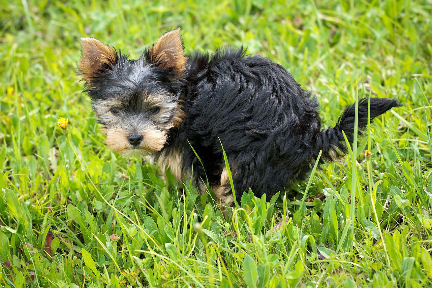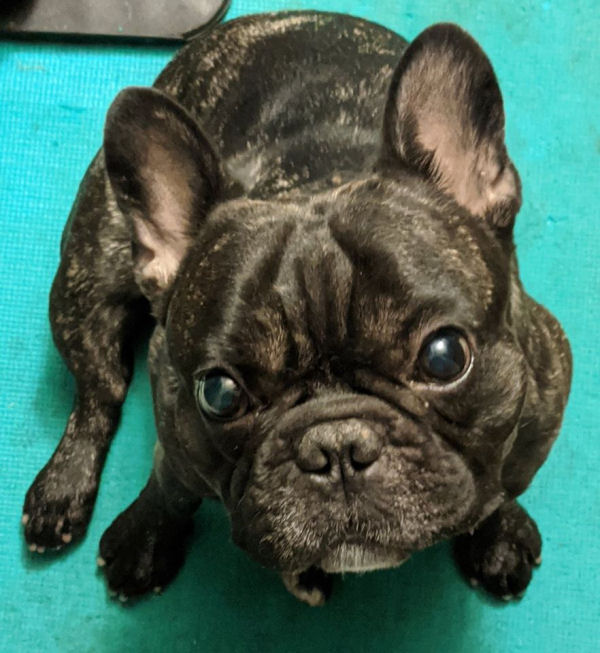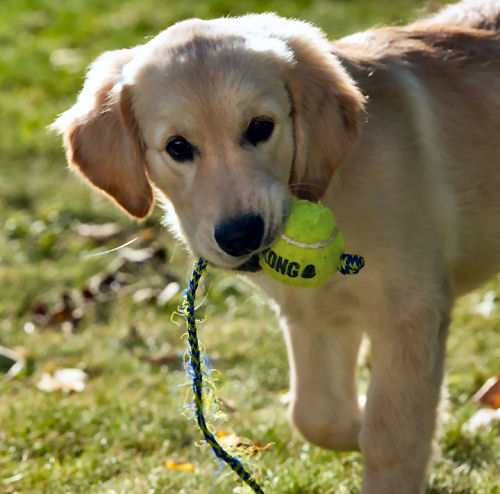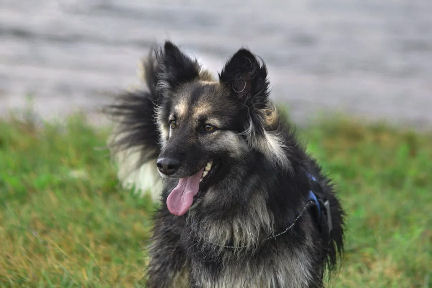Nobody relishes standing out in the rain waiting for their dog’s to eliminate. You can make life easier for both of you when you teach your dog “Poop” on command.
There’s an old joke that an alien visiting our planet for the first time would be convinced that dogs are the species in control because their minions follow them around, pick up their poop, and carry it around.
But every responsible dog owner has the obligation to clean up after their dogs, regardless of what aliens think of us. But it would make life better if our dogs would eliminate when and where we want, rather than taking forever to find the perfect spot.
You must be willing

To achieve the “poop on command” goal, you have to be willing to commit. You must go out with your dog every single time, you must have treats with you, and you must be clear and consistent.
Even though we have a fenced yard, we go out with our dogs every single time. Even if it’s raining, sleeting, or three in the morning.
There are lots of reasons we do:
When we had a nasty-dog neighbor, we could avoid fence fighting.
We can stop our dogs from eating various unknown, nasty things in the yard.
We get first dibs on the bread slices the squirrel drops in our yard (yes, we do have foolish neighbors).
It lets us know if one of the dogs has stomach issues, before they mess the house.
We know which dog has the tummy trouble.
Is it convenient? Not particularly. Especially with multiple dogs, we think it’s wise.
Getting cooperation
Everybody poops. That’s a given, as well as a beloved children’s book. Learning your dog’s schedule makes for easier housebreaking and elimination training.
When you know your dog has to go, head out with them. If there’s a particular place you want them to go, put them on collar/harness and leash and head directly to that spot and wait. If your dog is one that wanders around before getting down to business, take a couple laps around the yard with them and go back to the chosen spot.
Then it’s a waiting game. For the kabillionth time, we’ll repeat the doing nothing is the hardest part of dog training. But waiting is the best thing you can do.
When they hit the mark, praise and reward. Call it whatever phrase you choose to use. We use “go poop” because we got over being embarrassed in public long ago. A friend of ours uses “Hit it!” We assume she’ll never be part of a band.
Every single time
If you want your dog to learn to poop on command, you have to praise, phrase (good poop!), and reward every single time.
We’re often asked when praise and treats can be phased out. The answer is always never. When you’re willing to do your job without pay, that’s when you can phase out your dog’s.



